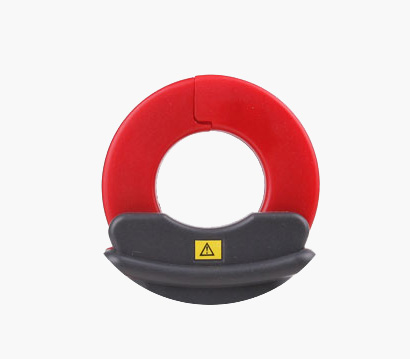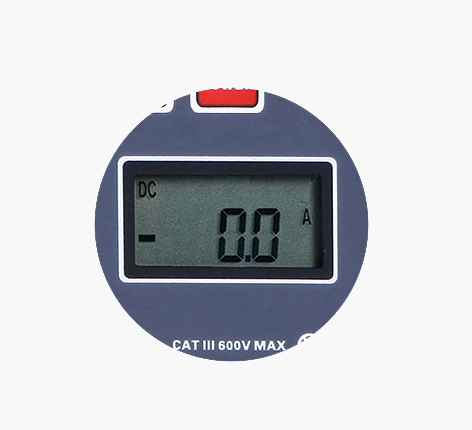The high-accuracy leakage current clamp meter with measuring range of 0.00mA-300.00A, 35*40mm jaw opening. The leakage current meter has a wide application range, 68mm jaws, suitable for electrical safety testing and maintenance in various environments.

Super large diameter, more practical
- Jaw size 35*40mmmm
- Opening 35mm, can clamp diameter 35 wires

Backlit HD screen design
- The logo is displayed in the upper left corner
- DC direction is negative display "-"
Applications
sisco clamp current meter is available with a measuring range of 0mA-60A AC/DC. The clamp ammeter is especially suitable for places with dense wiring (power metering systems, high-speed rail systems, automotive circuit maintenance, etc.), and non-contact current measurements to ensure safe operation. The instrument is small in size, high in precision, stable in performance and perfect in function, and is one of the necessary tools for electrical safety inspection and maintenance.

| Model | SISCO-ETCR6500 |
| Current Range | 0.00mA-300A |
| Resolution | 0.1mA |
| Accuracy | ±1.5%rdg±5dgt (23℃ ± 3℃ , below 70%RH) |
| CT Size | 35*40mm |
| Meter Dimensions | 184mm×70mm×38mm |
| Weight | 250g |
| Power Supply | Alkaline battery 6LR61 9V |
| LCD Size | 35mm×21.5mm; display area: 32mm×15mm |
| Sampling Rate | 2 times/second |
| Communication Interface | Storage data can be uploaded to the computer, and software monitoring. |
| Data Storage | 99 groups, flash display "FULL" symbol indicates storage full |
| Peak Hold | Peak value capture and hold function, long press HOLD key display peak value. |
| Data Hold | Data hold function: "DH" symbol display |
| Overflow Display | Exceed measure range overflow function: "OL A" symbol display |
| Polarity Indication | In DC current test auto-identified and display the "-" symbol |
| Auto Shut Down | 5 minutes after powering on, it will power off automatically without any operation to reduce the power consumption. |
| Battery Voltage | Battery voltage lower than 7.2V will display a low battery voltage symbol, and remind to replace the battery. |
| Working Current | 5mA |
| Line Voltage | Below AC 600V circuit test |
| Shift | Automatically |
| Accessories | Meter: 1PCS; Communication cable: 1PCS; Cloth bag: 1PCS |
Q1: What is clamp ampere meter?
A1: A clamp ammeter is a combination of a current transformer and an ammeter. The iron core of the current transformer can be opened when the wrench is tightened; the wire through which the measured current passes can pass through the gap opened by the iron core without being cut off, and the iron core is closed when the wrench is released.
Q2: How does a current clamp meter work?
A2: A clamp meter is a clothespin-shaped instrument that can be clamped around a live wire in order to measure the current it's carrying. As a measurement principle, clamp meters detect the magnetic field emitted by current flowing in a wire in order to measure the current value.
Q3: How to use a clamp ammeter?
A3: When using a clamp ammeter to detect the current, be sure to clamp a measured wire (wire). If two (parallel wires) are clamped, the current cannot be detected. In addition, when the center (core) of the clamp ammeter is used for detection, the detection error is small. When checking the power consumption of home appliances, it is more convenient to use a line splitter. Some line splitters can amplify the detection current by 10 times, so the current below 1A can be amplified before detection. Use a DC clamp ammeter to detect the DC current (DCA), if the current flows in the opposite direction, it will display a negative number. This function can be used to detect whether the car's battery is in a charging state or a discharging state.
Tips: Why need an earth leakage clamp meter?
In any electrical installation, some current will flow through the protective ground conductor to the ground. This is usually called leakage current. Leakage current most commonly flows in the insulation surrounding conductors and in the filters protecting electronic equipment around the home or office. On circuits protected by GFCIs (Ground Fault Current Interrupters), leakage current can cause unnecessary and intermittent tripping. In extreme cases, it can cause a rise in voltage on accessible conductive parts.
Thank you for buying industrial test and measurement equipment on SISCO.com, all products sold by SISCO and the partner cover a 12 months warranty, effective from the date of receiving the products.
What is covered?
SISCO is responsible for providing free spare parts, and free technical support to assist the customer to repair the defective products until the problem is solved.
What is not covered?
- Product purchased from anyone other than a SISCO store or a SISCO authorized reseller.
- Expendable parts.
- Routine cleaning or normal cosmetic and mechanical wear.
- Damage from misuse, abuse or neglect.
- Damage from use of parts other than SISCO approved.
- Damage from use outside the product’s usage or storage parameters.
- Damage from use of parts not sold by SISCO.
- Damage from modification or incorporation into other products.
- Damage from repair or replacement of warranted parts by a service provider other than a SISCO authorized service provider.
- Damage caused by the application environment not meeting the product usage requirements and the failure to perform preventive maintenance.

